In the US, we normally make bacon out of pork bellies, but actually a wide variety of parts of the pig can be used for bacon. In this post I am talking about making bacon from a Boston butt roast, a cut which has a couple of advantages over a pork belly. First, it is easier to find at typical supermarkets. (My local Kroger had a number of Boston butt roasts, but no pork bellies. For pork bellies, I usually need to go to an Asian grocery, but sometimes what they have is already sliced, which is not suitable for bacon.) Second, it has a good balance of lean to fat.
It also has one basic disadvantage which needs to be handled. A pork belly is relatively thin and is an even thickness. It is therefore easy for the cure to penetrate evenly throughout the belly. (On the other hand, the pork belly frequently has a tough skin which needs to be removed, which is a pain.) A Boston butt is a large piece of meat (this one was nearly 10 pounds), with a bone in it, and is big and irregularly shaped. It is therefore more difficult to make sure that the cure penetrates evenly to the heart of the meat. Any part where the cure does not penetrate will ultimately be grey and will taste like roast pork, which is not bad, but is not bacon.
The first step is to locate the bone and remove it, cutting the meat into pieces which as much as possible are even rectangles of medium thickness. In this case, I cut the meat into blocks of 4 lbs., 3 lbs., and 2-1/2 lbs.as shown below.
(Note 7/19/18 – I recently saw boneless pork butt at my local Kroger, and successfully made cottage bacon from it, skipping the deboning step discussed above. The boneless pork butt worked well, and in the future I will keep my eyes open for it.)
The next step is to apply the cure and to put the pieces in ziplock baggies. I am currently using a very simple cure of 1 Tbs. of Morton Tender Cure and 1 tsp. of brown sugar for each pound of meat. (This is equivalent to 30.8 g. of Tender Cure and 9.2 g. of brown sugar per kilogram of meat. Lately I have found it easier to use grams and to weigh everything.)
The curing salt and sugar are mixed together and then applied on both sides of each piece of meat. It is important to use the right amount of cure. Too little and the entire piece of meat may not be cured. Too much and the meat will be too salty.
After rubbing the cure into the meat, put each piece of the meat and any cure that did not adherer into a separate ziplock baggie. Lay the baggies flat on a cookie sheet and put them in a refrigerator to cure for about a week. They should be flipped at least once a day to help the cure penetrate evenly.
After the pieces are cured and feel firm to the touch, rinse them off, pat them dry with paper towels and dry under a fan for around 20 minutes until the surface is dry to the touch.
Then smoke them in a preheated smoker at 180 degrees for about 3 hours, until the internal temperature of the meat reaches 150 degrees.
Here is the MasterBuilt electric box smoker which I use.
Here are the pieces put into the smoker. I have put them in a bit offset (top and bottom toward the front and middle piece toward the back) so that there is more room for the smoke to circulate around them.
Here are the smoked pieces.
I then sliced the bacon on a slice machine using the No. 2 setting. Here are some slices of cottage bacon. These were taken from two different pieces and show the different lean and fat content of the different pieces. There is enough fat that the bacon will fry by itself, but mostly it is lean. The even pink color shows that the cure penetrated all of the pork butt properly.



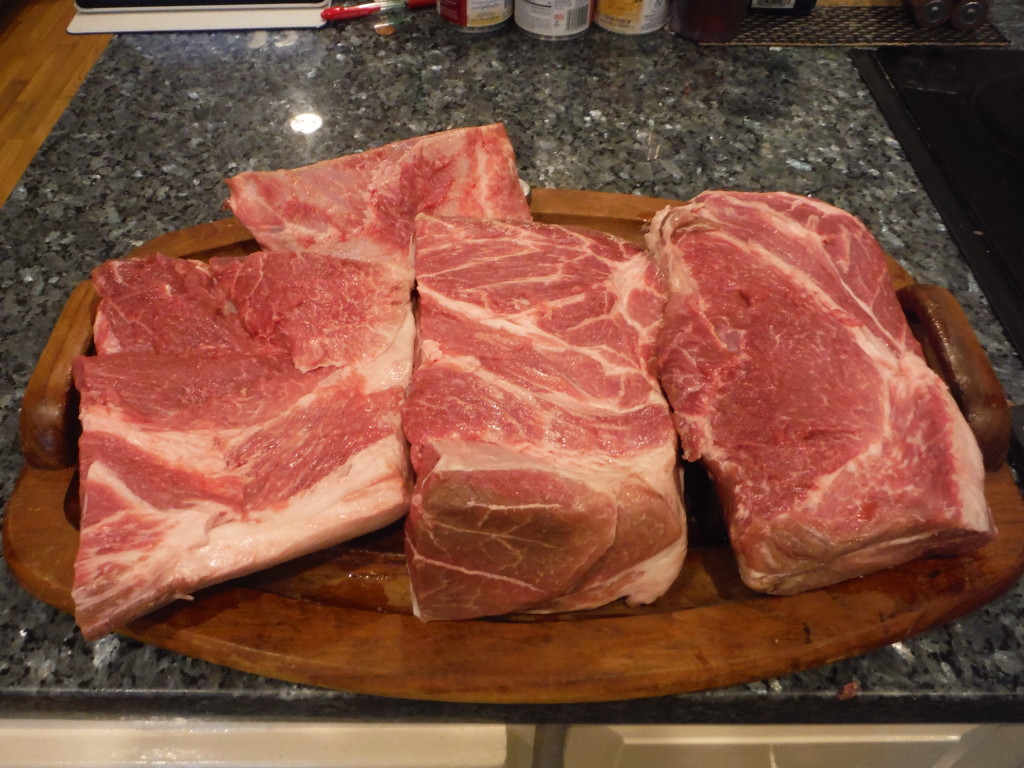
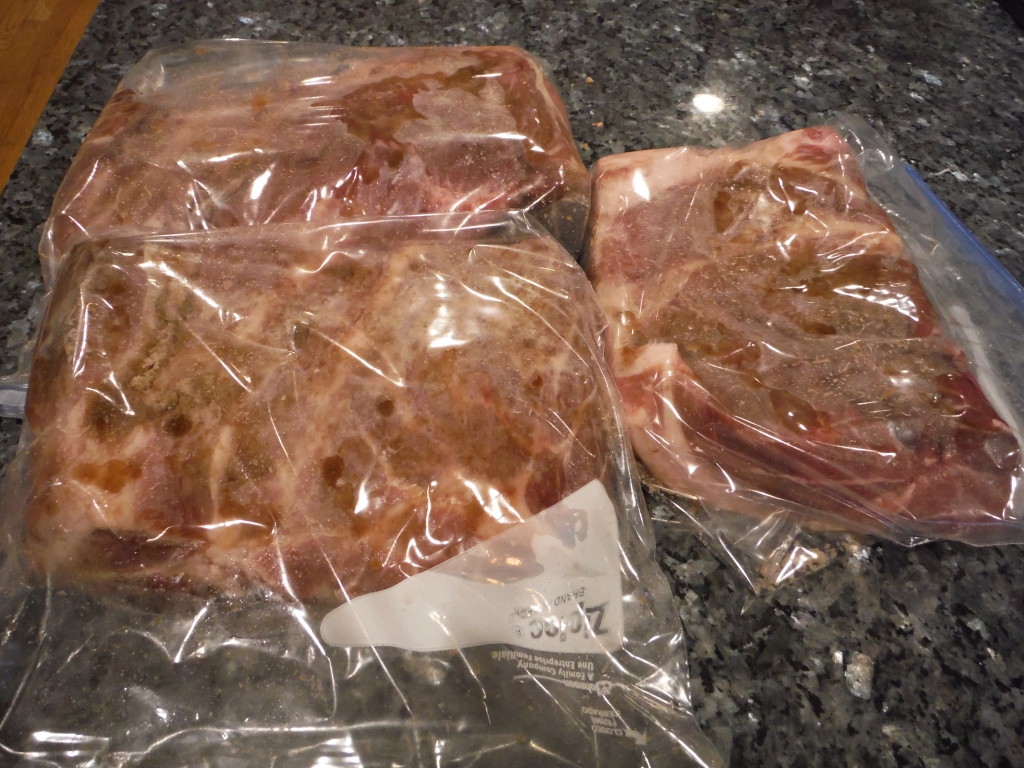
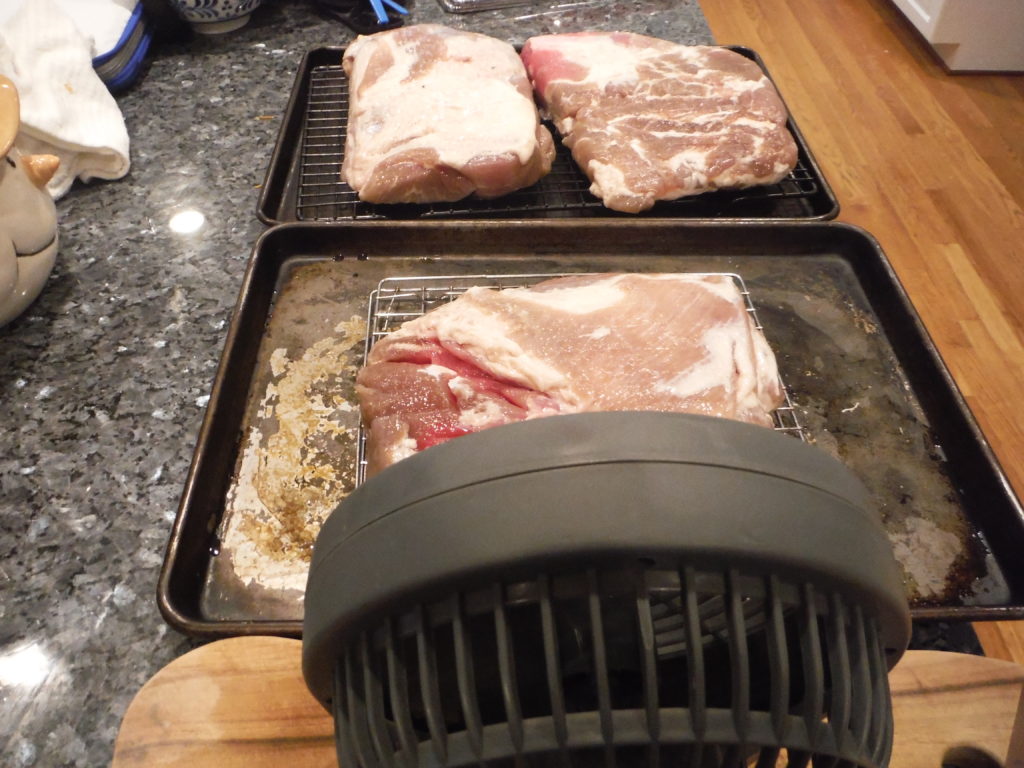
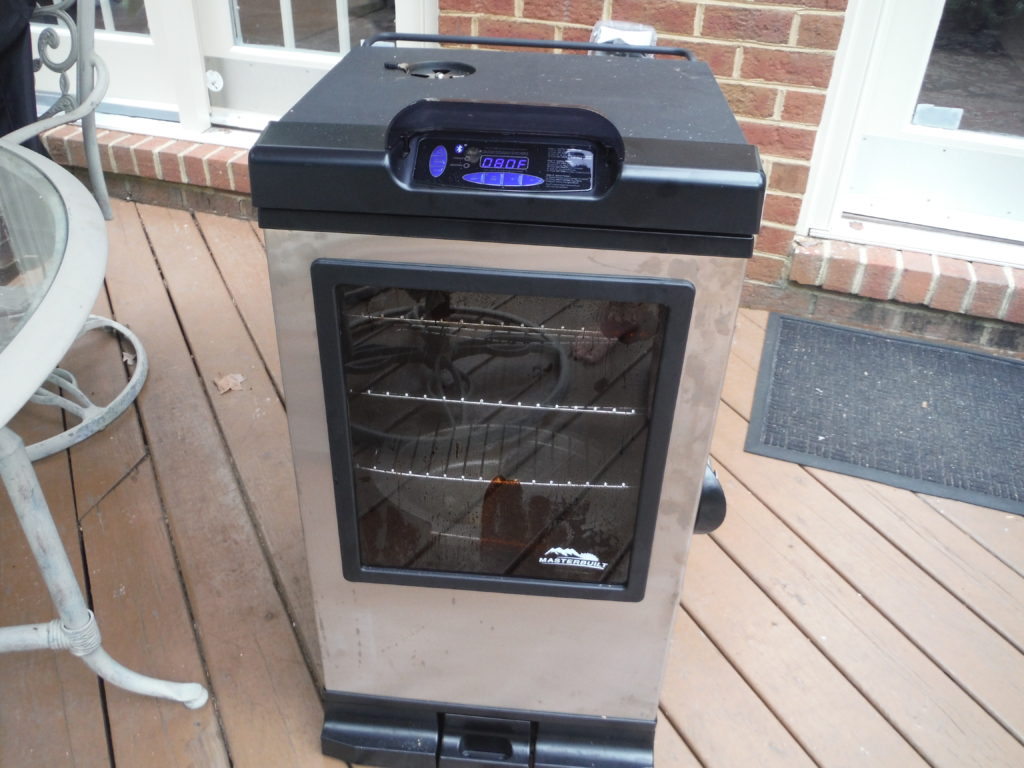
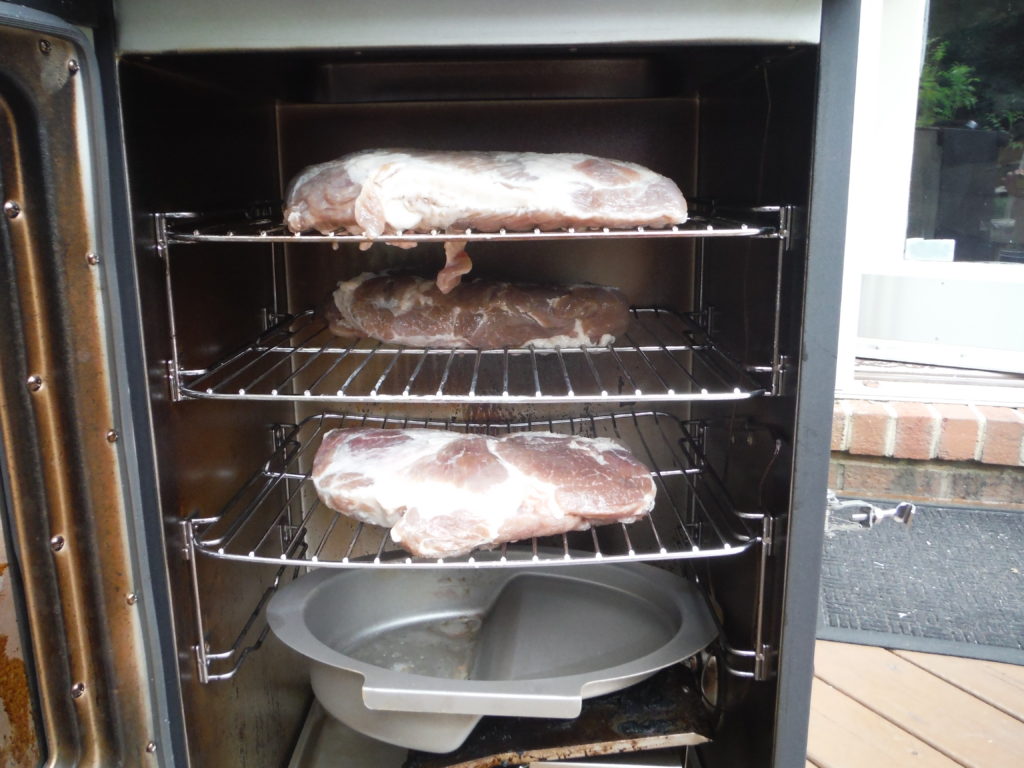
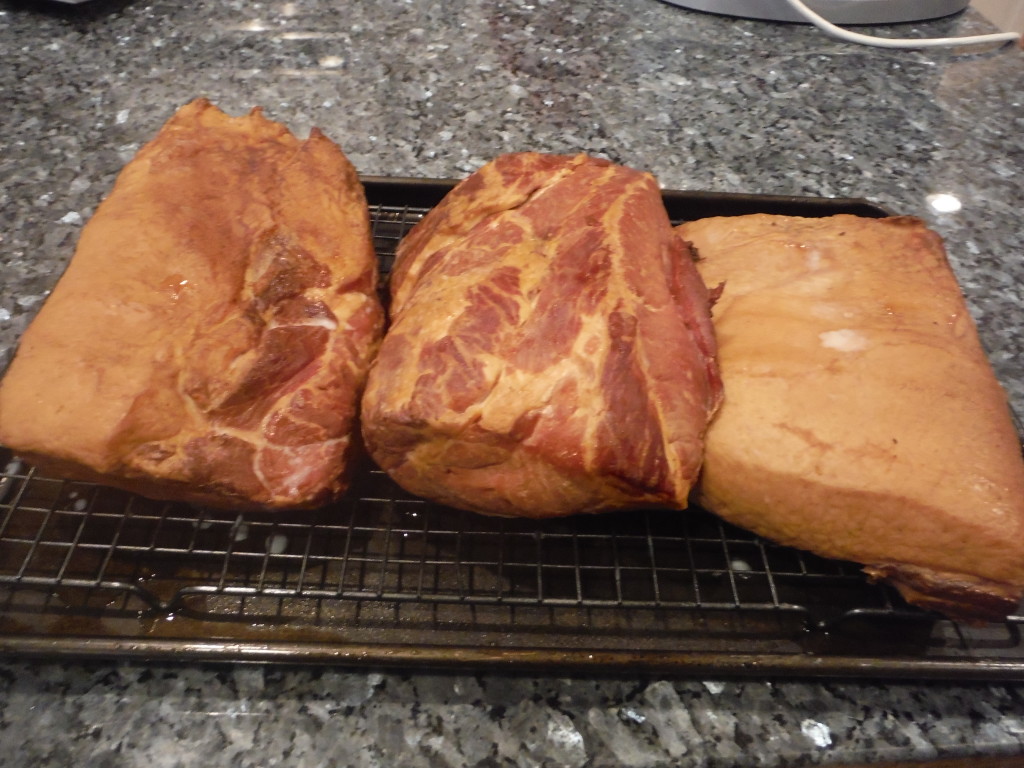

Great photos! I really like your step by step! Maybe next time a photo of the smoker?!